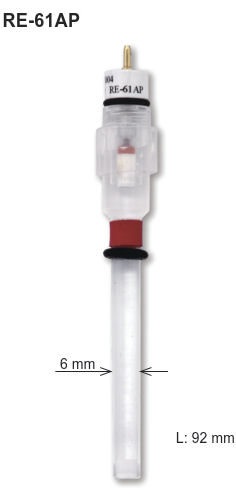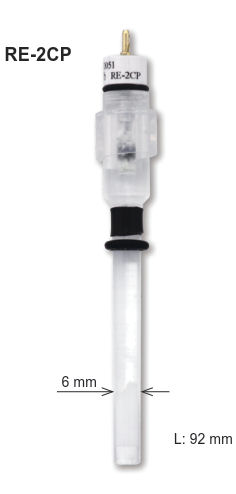This is a basic content about the types of reference electrodes used for electrochemical measurement, their uses, and selection methods, for beginners in electrochemical measurement.
The topics are listed below:
- Part 1: Introduction
- Part 2: Silver-silver chloride electrode (SSCE)
- Part 3: Calomel electrode
- Part 4: Reference electrode not involving chloride ion
- Part 5: Non-aqueous solvent
- Part 6: Reversible hydrogen electrode (RHE)
- Part 7: Junction potential
- Part 8: Related subjects of reference electrode
4. Reference electrode not involving chloride ion
Professor Noriyuki Watanabe
In this section, we present the other reference electrode when you do not want to use the typical reference electrode (Ag-AgCl or calomel electrode) already mentioned. For example, you may be discouraged to use it in the cases that your test solution has to be kept away from a contamination with chloride ion or it is strong alkali or strong acid etc. In those cases, you have a choice of mercury-mercuric oxide (Hg-HgO) reference electrode for alkaline solution and mercury-mercurous sulfate reference electrode for neutral or acidic solution.
Mercury-mercuric oxide reference electrode (Hg-HgO electrode)
This is used for strong alkaline solution. It is utilized the equilibrium reaction between mercuric oxide layer formed on mercury and hydroxide anion in alkaline solution as internal solution. Consecutive reactions are shown below.
Hg ⇔ Hg2+ + 2e- (1)
HgO + H2O ⇔ Hg(OH)2 ⇔ Hg2+ + 2OH- (2)
The electrode potential for the reaction (1) is given shown below as equation (3).
E = E0Hg/Hg2+ + (RT/2F) ln aHg2+ (3)
Since the activity of mercuric ion is given by using the solubility product constant as aHg2+ = Ks(Hg(OH)2) /(aOH-)2, equation (3) is replaced to equation (4).
E = E0Hg/Hg2+ + (RT/2F ) ln Ks(Hg(OH)2) - (RT/F ) ln aOH- (4)
As described in the section of silver-silver chloride, the standard potential of the reference electrode utilizing highly insoluble salt depends on significantly its solubility product constant.
Using E0Hg/Hg2+ = 0.8537 and Ks(Hg(OH)2) ≃ 10-25, equation (4) is finally given as below.
E = 0.116 - (RT/F ) ln aOH- (5)
As the internal electrolyte, 0.1 M, 1 M, 3 M and saturated solution of NaOH or KOH are employed. Saturated solution of Ca(OH)2 or Ba(OH)2 are sometimes used because of its low solubility compared with NaOH or KOH. Lower OH- activity of these alkali earth solution is favorable for use of glass container and raises the standard potential a little bit upward. The standard potentials of 1 M KOH, 1 M NaOH, saturated Ba(OH)2 and saturated Ca(OH)2 are 110 mV, 113 mV, 146 mV and 192 mV, respectively.
Mercury-mercurous sulfate electrode
The electrode reaction and the electrode potential are shown as follows.
Hg + 1/2SO42- ⇔ 1/2Hg2SO4 + e- (6)
E = E0Hg/Hg22+ + (RT/2F) ln aHg22+ (7)
The equation (7) is replaced by using the relation between the activity of mercurous ion and the solubility product constant Ks(Hg2SO4),
(Ks(Hg2SO4) = [Hg22+][SO42-]) as follows.
E = E0Hg/Hg22+ + (RT/2F ) ln Ks(Hg2SO4) - (RT /2F ) ln aSO42- (8)
Putting E0Hg/Hg22+ = 0.7960V(25°C) and Ks(Hg2SO4) ≃ 7×10-7, into equation (8), the final form is shown as below.
E = 0.6125 - (RT/2F ) ln aSO42- (9)
The reference potential is considerably positive compared to that of calomel electrode reflecting rather large solubility of mercurous sulfate. Saturated K2SO4 or 1 M H2SO4 are used as the internal electrolyte.
This reference electrode is an appropriate choice for the case to avoid a contamination of chloride ion.
Line-up of those kinds of electrode are available from BAS Japan as RE-61AP for Hg-HgO electrode and RE-2CP for Hg-Hg2SO4 electrode.
 RE-61AP |
 RE-2CP |

